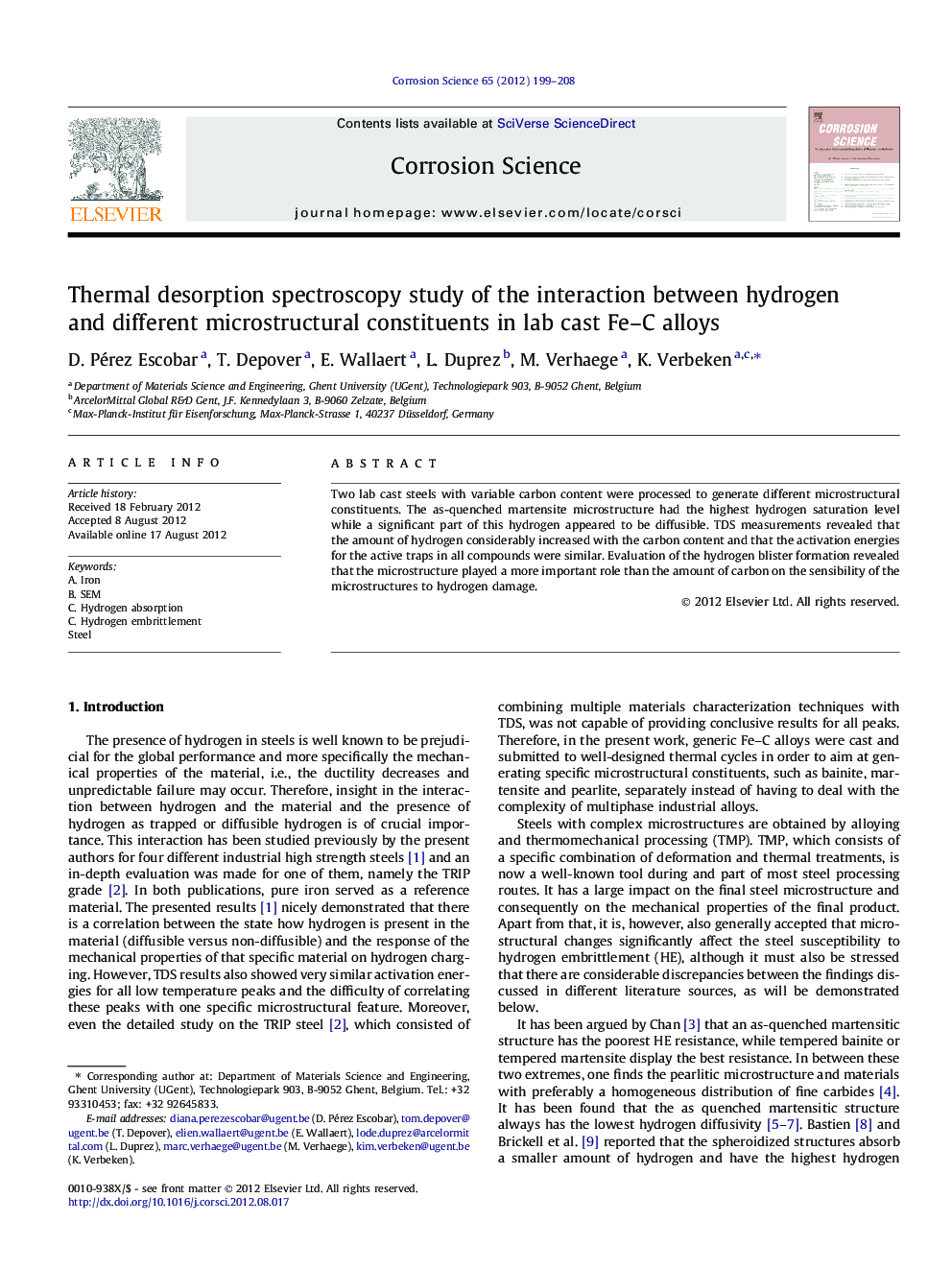| Article ID | Journal | Published Year | Pages | File Type |
|---|---|---|---|---|
| 1469483 | Corrosion Science | 2012 | 10 Pages |
Two lab cast steels with variable carbon content were processed to generate different microstructural constituents. The as-quenched martensite microstructure had the highest hydrogen saturation level while a significant part of this hydrogen appeared to be diffusible. TDS measurements revealed that the amount of hydrogen considerably increased with the carbon content and that the activation energies for the active traps in all compounds were similar. Evaluation of the hydrogen blister formation revealed that the microstructure played a more important role than the amount of carbon on the sensibility of the microstructures to hydrogen damage.
Graphical abstractFigure optionsDownload full-size imageDownload as PowerPoint slideHighlights► Hydrogen saturation level was significantly higher for as-quenched martensite. ► The hydrogen present in the martensite appeared to be significantly more mobile. ► TDS indicated similar activation energies for the traps in the different materials. ► Appearance of hydrogen blisters was correlated with the material microstructure. ► Appearance of hydrogen blisters was not influenced by the carbon content.
